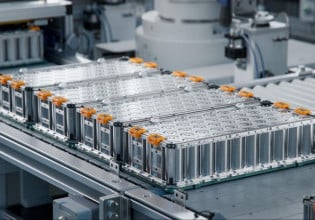Dialog Semiconductor supports Huawei Fast-Charger Protocol
Dialog Semiconductor plc today announced that Huawei's new Honor 7 smartphones use Dialog's iW630+iW1780+iW671 Rapid Charge adapter chipset to enable Huawei's Fast Charger Protocol (FCP). FCP is a proprietary protocol from Huawei, designed to charge smartphones and other mobile devices significantly faster than conventional USB charging technology. Dialog's iW630+iW1780+iW671 chipset provides high efficiency and high power density needed for small form-factor fast-charging smartphones and mobile device power adapters.
“As a leader in global communications technologies, Huawei continues to deliver smartphones that enhance the user experience with better design, smarter functionality and exceptional user experience,†said Mr. Zhaoxing Zhou, Power Management Expert of Huawei Device. “We selected Dialog’s chipset to support our Fast Charger Protocol based on their established expertise in digital power control to enable lower cost, higher efficiency and more reliable fast charging power adapters.â€
“In today’s digital world of ‘always on’ mobile applications, social media and video streaming, leading manufacturers are quickly delivering smartphones that address consumer demand for faster charging,†said Davin Lee, Senior Vice President and General Manager of the Power Conversion Business Group at Dialog. “Dialog is delighted to support Huawei’s innovative Fast Charger Protocol in its latest Honor 7 smartphone, solidifying our leadership position with an estimated 70% for fast charging power conversion IC’s in China’s smartphone market.â€
The iW630 Rapid Charge interface IC resides on the secondary side of the ac-dc charger power supply and works with Dialog’s iW1780 PrimAccurate™ primary-side digital pwm controller. The iW1780 uses a unique secondary-to-primary digital communication link signal to receive all rapid charge commands and then dynamically scales the output voltage regulation and output current limit of the power adapter to deliver more power through a standard USB cable.
Current sensing is performed by the iW1780 on the primary side, eliminating the need for a secondary-side current sense resistor for an inherently high efficiency solution, with the iW671 synchronous rectifier further boosting efficiency up to 88%.
Soft short circuits in mobile device power supplies can be caused by dirt in the USB cable or damaged or worn cables and connectors, which can create excessive heat build-up, resulting in burned or melted charging cables and damaged mobile devices.
Conventional ac-dc power adapters typically provide protection from over-current fault events caused by shorts by either turning off the output voltage and latching it off or by repeatedly cycling the power off and on (commonly called hiccup) until the fault event is removed. If latchoff occurs, consumers need to unplug the cable from the ac input and recycle the power, which can be inconvenient or even perceived as a defective or failed adapter. With conventional hiccup, pwm switching pulses are sent out in every power-on-reset (POR) cycle. This kind of cycle-by-cycle hiccup can result in high average output current from the USB cable and high average power dissipated in the charger cable and connector. This may generate excessive heat and can result in the risk of melting or burning the adapter cable and/or connector.
Instead of continuously attempting restarts in every cycle during a persistent fault, Dialog’s SmartDefender advanced hiccup technology in the iW1780 controller only sends out the pwm switching pulses in two POR cycles and then blocks the pwm switching pulses in the next six POR cycles. This increases the shutdown interval every two cycles, and reduces the average power delivered to a short circuit by up to 75% without latching off – all with no added components.






